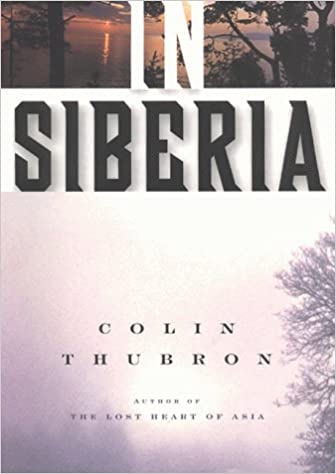 In Siberia by Colin Thubron (2000 nonfiction)
In Siberia by Colin Thubron (2000 nonfiction)
I read this book making frequent reference to its 2-page map and 7-page index. In the map a dotted line connects the towns and rivers identified in the text. The author has provided a trail, starting at Vekaterinburg and proceeding eastward to Magadan, without which I would have been lost. Every place is located and described as encountered, then located in history. When available, renowned writers are mentioned as witnesses. It is in Albazin that Thubron meets a 90-year-old librarian who says, “I’ve read Solzhenitsyn and I’m not impressed. He could only write about what he knew and that was limited. It gives him no authority to guess at numbers. Sixty million dead! It was only twenty million. These were Stalin’s victims.” This is the most harrowing book I can recall reading. Siberia is extreme in every respect. Statistics challenge understanding. Thousands are executed and buried in nameless graves. Man’s inhumanity is a reflection or product of nature’s incredible cold. At Oimyakon a temperature of -97.8˚F has been recorded – the coldest inhabited place on earth. I didn’t find Oimyakon on the map. Vorguta saw 28,000 die when worked 12 hours daily at -40˚F. Kolyma saw 1 of 100 prisoners survive 14-hour workdays in 1932 at -60˚F. The mines reduced men to savages. They hacked off fingers, injected kerosene under their skin, rubbed acid into eyelids, hoped to get into hospital, feigned madness, “descended into the walking dead, then slipped into oblivion”. The poet Anatoly Zhigulin survived these conditions in the 1950’s, and has described brutal maimings, accidents, internecine murders and desperate strikes. Prisoners, enchained, were addressed by number only, climbed 4 miles to reach the mines, and women convicts trudged 8 miles every day to carry home cold rations. Thubron recounts a joke his companion tells: “My grandfather was a village postman, who spent 5 years in the camps for telling a passerby that Stalin was on the line to talk to him. For that, grandpa got 5 years.” Thubron ends on that note, “We’ve still got that – jokes.”
Reviewed by Martin Waldron
a

